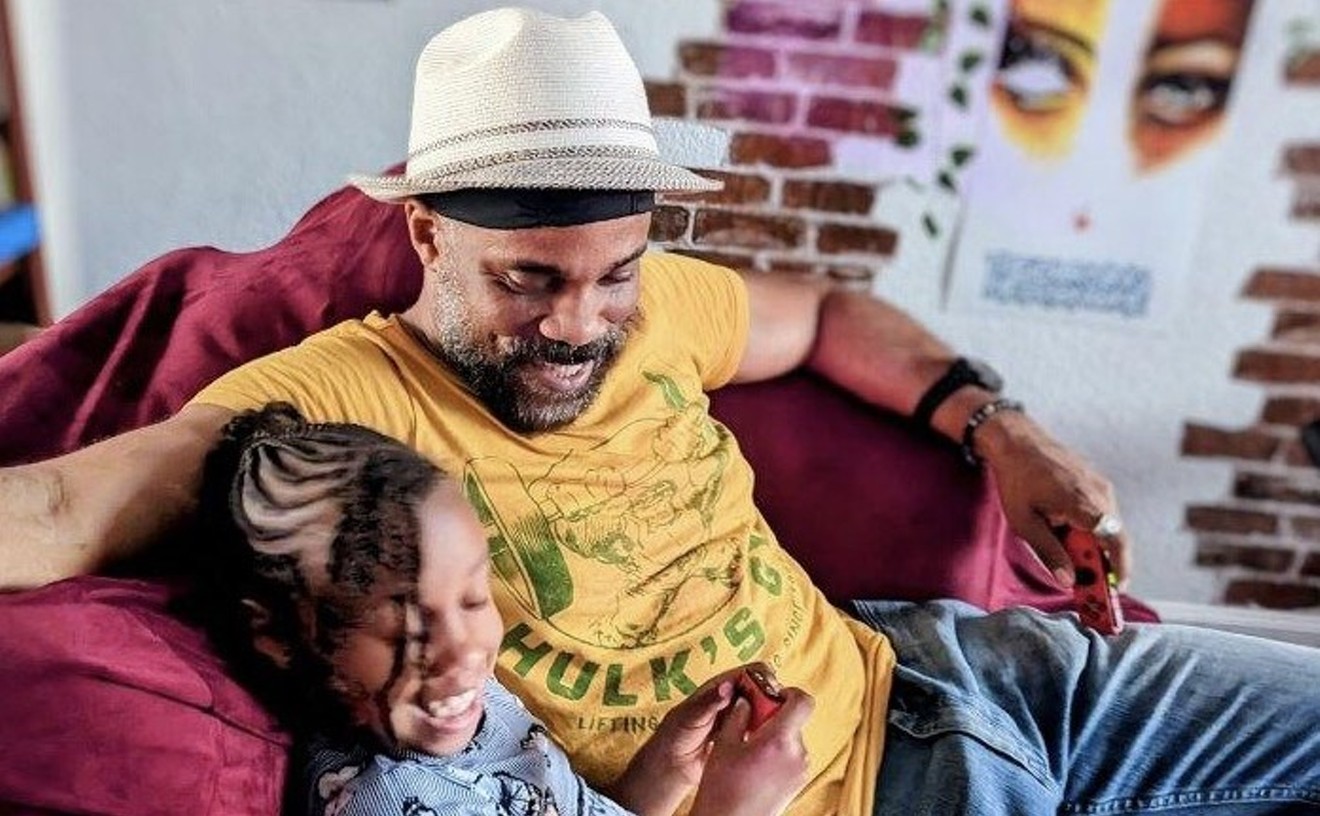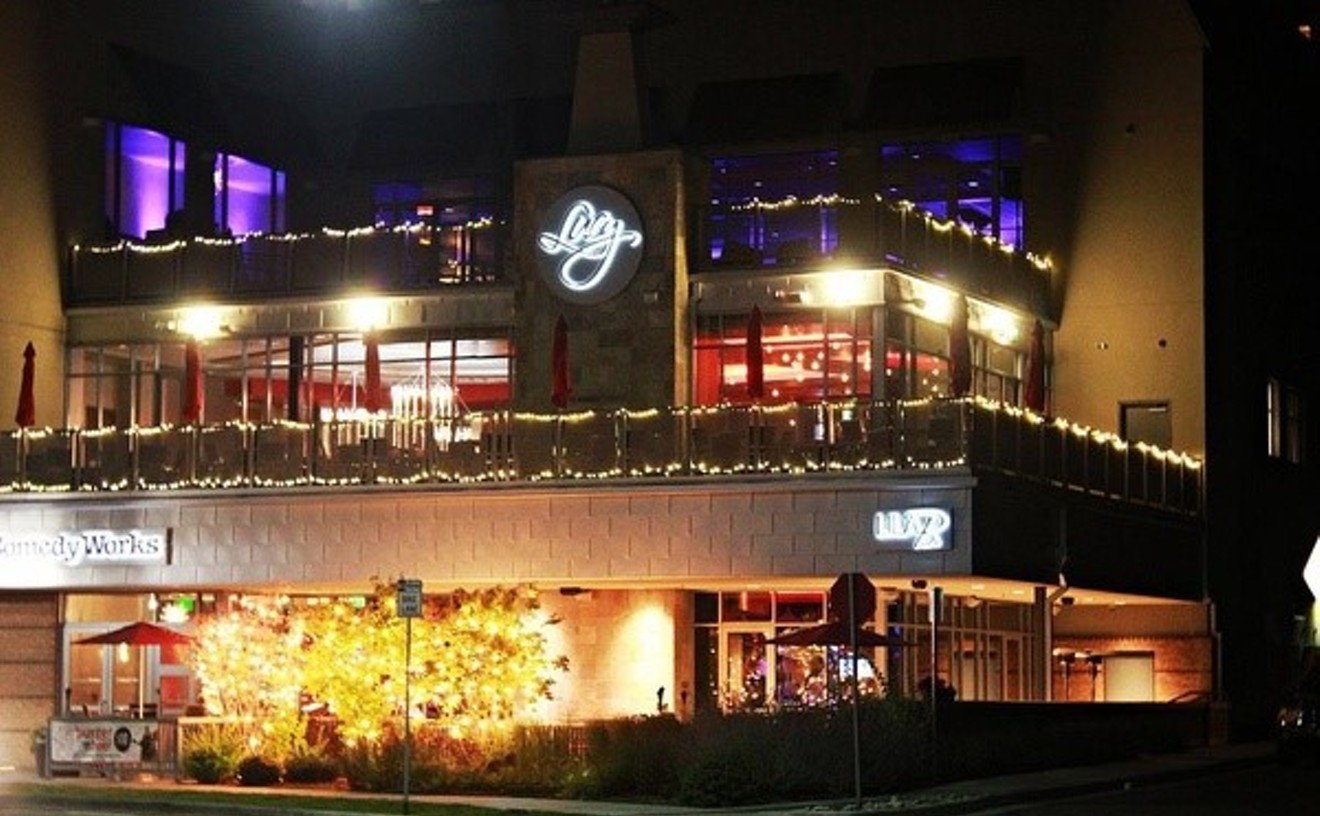Immigration detention has dominated the news cycle in the Denver metro area in 2019, with scores of articles focusing on the Aurora immigrant detention facility that holds ICE detainees right in our backyard.
So it's only fitting that César Cuauhtémoc García Hernández, a University of Denver law professor, is launching a tour for his new book, Migrating to Prison: America’s Obsession With Locking Up Immigrants, in Denver, at BookBar, on Saturday, December 7.
Westword caught up with García Hernández to learn more about his career and what he discovered while researching this book.
Westword: Tell us a bit about yourself
César Cuauhtémoc García Hernández: I’m currently a professor at the University of Denver, which has been my academic home for the last six years and where I’ve been since the day I began working on this book. I’ve been thinking about immigration prisons since well before I arrived at DU. This book comes out of a longstanding exposure to and interest in immigration prisons. I found it jarring to learn about the widespread use of immigration prisons, in particular in south Texas, because that’s the community that I was born and raised in.
I didn’t know that this was happening until I left the region and came back in 2008 as a young lawyer and found myself representing clients in these facilities. There’s this whole world of incarcerated individuals who had been here all along but were completely unknown to me.
I learned that my experience is very common. This is a network of facilities that was invisible in plain sight. That experience was one that struck me as an important opportunity to engage with more people about what was happening when it came to the government’s enforcement of immigration law.
What is crimmigration?
That’s a term that describes the way that criminal law and immigration law intersect with one another. It’s a term that many academics and lawyers have been using the last ten years or so because of the historical transition that happened in the 1990s and onward.
Historically, criminal law and immigration law were entirely separate from one another. More recently, though, what we see is that for people who aren’t U.S. citizens, that’s only the beginning of the story. These days, there’s the expectation that there will be immigration consequences that fall on top of criminal consequences for engaging in criminal activity.
What are some of the highlights of what you learned through your research?
The size of the immigration prison population is one of those things that catches people by surprise. There are about half a million people, more or less, in any given year that are locked up by the federal government while it decides whether they can stay in the U.S.
We haven’t always done things this way. In 1954, Dwight Eisenhower's attorney general was overseeing a naturalization proceeding at Ebbets field, the home of the Brooklyn Dodgers.
He announced a new policy: that the federal government was going to shut down its immigration prisons and, most importantly at that point, the immigration prison at Ellis Island. Most of us think about Ellis Island as the place that welcomed people. It was also a place that locked up people who were coming from Europe.
Clearly the United States had some of its finest moments in the decades to come. That history tells us that we have, at one point, done things radically different than we do now was fascinating for me as I dug into it, and it’s an important part of the conversation.
What did you learn about the immigrant detention facility in Aurora?
The Aurora facility is one of the oldest facilities in the United States. It dates back to the mid-1980s, when the former Immigration and Naturalization Service was just starting to get back into the business of locking up migrants after a quarter-century of not doing so.
It started off as a private facility and remains a private facility. ... These days, it continues to detain anywhere from several hundred people to somewhere in the 1,500-person range. The population fluctuates in that facility. We’ve seen some instances of problems; some of these reports are coming from the government itself.
The Inspector General issued a report detailing some of the perverse claims to outdoor exposure that the people who are locked up in the facility have where recreation areas are not outside. They just happen to have access to the sky. There were photographs that were included in that Inspector General report that are quite troubling.
To think that we’re holding [people] in concrete cells — they never get exposure to the wind, sun and rain. I don’t think it takes a psychologist to know that that has a pretty detrimental effect on the mental state of anyone — all while going through the very high-stakes process of trying to make their last claim to stay in the U.S.
This facility operates as many of them do: in plain sight. But most of us who live far away have no idea that they’re there.
What’s your conclusion about immigration detention facilities? Should we get rid of them?
We have to ask whether these things are justifiable. What harm are we trying to address by locking up half a million people? What are the financial and human costs? We know that people die in these facilities, like Kamyar Samimi.
We see over and over again why these facilities are open: money. Private prison corporations are making a ton of money off of these facilities, as are local governments.
Many facilities are owned by local governments. Sometimes they have a facility that they rent out to ICE, sometimes they work through a private prison corporation.
At the end of the day, the local government is making money regardless. Making money off the money they’re getting from the federal government, and making money off the taxes and the people in their community that are employed. They’re financially invested, just the same as how the private prison company is financially invested. That’s a campaign platform.
That’s a sizable employer, and the risk is that you lose that employer. I talk in the book about several examples in which we see the federal government announcing that it’s going to end a contract with a prison company. Everyone jumps into action, and it's true of both Republicans and Democrats. Immigration prisons started with bipartisan support, and they continue having bipartisan support.
We know that they have an enormous human cost. An enormous cost for people like Mr. Samimi, who died two weeks after ICE showed up at his door. When we’re trying to decide whether those costs are justifiable, we have to ask why it is these facilities exist. We can ensure that people are abiding by the immigration court process without detaining them.
What has the Trump administration brought to the surface about American immigration policy?
The Trump administration has brought the cruelest edges of immigration policy to the forefront and public conversation. The Trump administration is trying to expand the number of people who are locked up on a given day and has had some success in doing that. But they’re not treading new ground here. They’re simply expanding what was done before. That’s important, because I spent eight years criticizing the Obama administration law enforcement track record and found myself beating my head against a brick wall.
Lots of people simply did not want to hear that.
The fact that President Trump is abrasive about the way he talks about immigrants makes more people open and self-reflective about what’s being done on our own behalf. Yes, it’s more, but it’s not leaps and bounds more than what was happening under President Obama. I view President Trump as an opportunity to have the conversations that are late in coming. They should have been happening during the Obama administration, but for one reason or another didn't.
What’s your pitch for why people should come out to the December 7 event?
It’s an opportunity to think about what it is the federal government is and has been doing on our behalf, not only in places far away along the U.S.-Mexico border, but right here in our own community, as nearby as Aurora.
As long as somebody is losing their ability to live freely or to live at all, and that’s being done in our name so that a private prison corporation can profit or so a politician can get elected, I think it’s imperative that we’re informed about that happening. And we need to think hard about why it is happening. And if we think it’s unacceptable, then we should be raising a ruckus about the human cost that’s being justified in our names.
César Cuauhtémoc García Hernández will read from his new book, Migrating to Prison: America’s Obsession With Locking Up Immigrants, at 7 p.m. on Saturday, December 7, at BookBar, 4280 Tennyson Street. Admission is free; find more information on the BookBar website.
[
{
"name": "Air - MediumRectangle - Inline Content - Mobile Display Size",
"component": "12017618",
"insertPoint": "2",
"requiredCountToDisplay": "2"
},{
"name": "Editor Picks",
"component": "17242653",
"insertPoint": "4",
"requiredCountToDisplay": "1"
},{
"name": "Inline Links",
"component": "18838239",
"insertPoint": "8th",
"startingPoint": 8,
"requiredCountToDisplay": "7",
"maxInsertions": 25
},{
"name": "Air - MediumRectangle - Combo - Inline Content",
"component": "17261320",
"insertPoint": "8th",
"startingPoint": 8,
"requiredCountToDisplay": "7",
"maxInsertions": 25
},{
"name": "Inline Links",
"component": "18838239",
"insertPoint": "8th",
"startingPoint": 12,
"requiredCountToDisplay": "11",
"maxInsertions": 25
},{
"name": "Air - Leaderboard Tower - Combo - Inline Content",
"component": "17261321",
"insertPoint": "8th",
"startingPoint": 12,
"requiredCountToDisplay": "11",
"maxInsertions": 25
}
]












